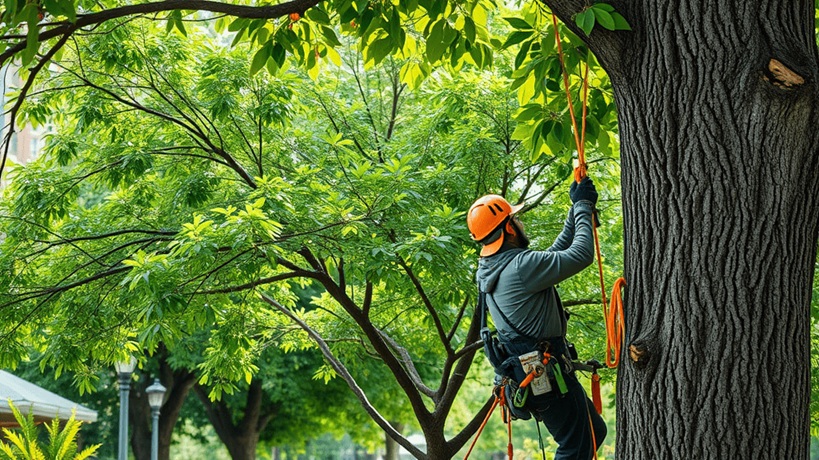The Ultimate Guide to Keeping Your Trees Healthy: Expert Secrets Revealed

Tree pruning stands as one of the most critical aspects of maintaining a thriving garden landscape, yet countless homeowners approach this vital task with trepidation and uncertainty. The art of proper tree care extends far beyond simply removing wayward branches; it encompasses a sophisticated understanding of plant biology, seasonal timing, and strategic intervention that can dramatically transform the health and appearance of your outdoor space.
Understanding the Science Behind Tree Pruning
The fundamental principle underlying effective tree pruning lies in the tree’s natural healing response. When you make a proper cut, you’re essentially directing the tree’s energy towards productive growth whilst eliminating potential stress points. This process requires a delicate balance between removing enough material to achieve your objectives without overwhelming the tree’s capacity to recover.
Research from the Royal Horticultural Society demonstrates that trees respond most favourably to pruning when cuts are made at specific angles and locations. The key lies in understanding the tree’s compartmentalisation response—its ability to seal off wounded areas and prevent the spread of decay organisms.
Seasonal Timing: The Key to Successful Tree Maintenance
The timing of your tree maintenance activities can make the difference between a thriving specimen and a struggling plant. Most deciduous trees benefit from pruning during their dormant period, typically between November and March, when the absence of leaves allows for better visibility of the tree’s structure.
However, certain species require different approaches:
• Spring-flowering trees should be pruned immediately after flowering to avoid removing next year’s buds
• Stone fruit trees benefit from summer pruning to reduce the risk of silver leaf disease
• Evergreen conifers respond best to light pruning in late spring when new growth appears
• Maple and birch trees should be pruned during full dormancy to prevent excessive sap bleeding
Essential Tools and Techniques for Professional Results
The quality of your pruning equipment directly impacts both the health of your trees and the efficiency of your work. Sharp, clean tools create precise cuts that heal quickly, whilst dull blades can cause crushing damage that invites disease and pest problems.
Your basic toolkit should include:
• Bypass secateurs for branches up to 2cm diameter
• Loppers for branches between 2-5cm diameter
• Pruning saw for larger branches requiring removal
• Pole pruner for accessing higher branches safely
• Disinfectant for cleaning tools between different trees
The three-cut method represents the gold standard for removing larger branches. This technique involves making an undercut approximately one-third through the branch, followed by a top cut slightly further out, and finally a clean cut at the branch collar to promote proper healing.
Common Pruning Mistakes That Damage Trees
Many well-intentioned gardeners inadvertently harm their trees through improper pruning techniques. Understanding these common errors can help you avoid costly mistakes that may take years to correct.
“The most destructive practice I encounter is the tendency to over-prune,” observes Dr. Sarah Mitchell, a leading arboricultural consultant. “Trees require their leaf canopy to produce energy through photosynthesis, and removing more than 25% of living tissue in a single season can severely stress the plant.”
Topping—the practice of cutting main branches back to stubs—represents perhaps the most damaging approach to tree maintenance. This technique destroys the tree’s natural form, creates weak attachment points for new growth, and significantly increases the risk of storm damage.
The Economic Benefits of Proper Tree Maintenance
Strategic tree maintenance delivers substantial long-term value that extends well beyond aesthetic improvements. Properly maintained trees can increase property values by up to 15%, according to studies by the Forestry Commission. Additionally, healthy trees provide measurable benefits through:
• Energy savings through strategic shading and windbreak effects
• Reduced maintenance costs by preventing emergency removals
• Enhanced property appeal that attracts potential buyers
• Environmental benefits including improved air quality and carbon sequestration
Recognising When Professional Help Is Needed
Whilst many pruning tasks can be accomplished by enthusiastic homeowners, certain situations require professional intervention. Large trees, those near power lines, or specimens showing signs of disease or structural problems should be assessed by qualified arborists.
The presence of dead or dying branches, fungal growth, or unusual leaf discolouration may indicate underlying health issues that require specialist diagnosis. Similarly, trees that have suffered storm damage or those requiring significant structural work benefit from professional expertise.
Developing a Long-Term Tree Care Strategy
Successful tree maintenance requires a holistic approach that considers each specimen’s unique requirements and your broader landscape objectives. Regular assessment of your trees’ condition, combined with proactive maintenance scheduling, can prevent many common problems whilst maximising the benefits your trees provide.
Consider maintaining detailed records of your pruning activities, including dates, techniques used, and observations about tree response. This information becomes invaluable for tracking long-term trends and adjusting your approach as your trees mature.
Moving Forward with Confidence
The journey towards mastering tree care requires patience, observation, and a willingness to learn from both successes and setbacks. By understanding the fundamental principles outlined above and applying them consistently, you’ll develop the skills necessary to maintain healthy, attractive trees that enhance your property for decades to come.
Remember that every cut you make influences your tree’s future development, making thoughtful consideration of each decision essential. With proper knowledge and careful execution, your commitment to regular tree pruning and comprehensive tree maintenance will reward you with a landscape that provides beauty, value, and environmental benefits for generations to come.




